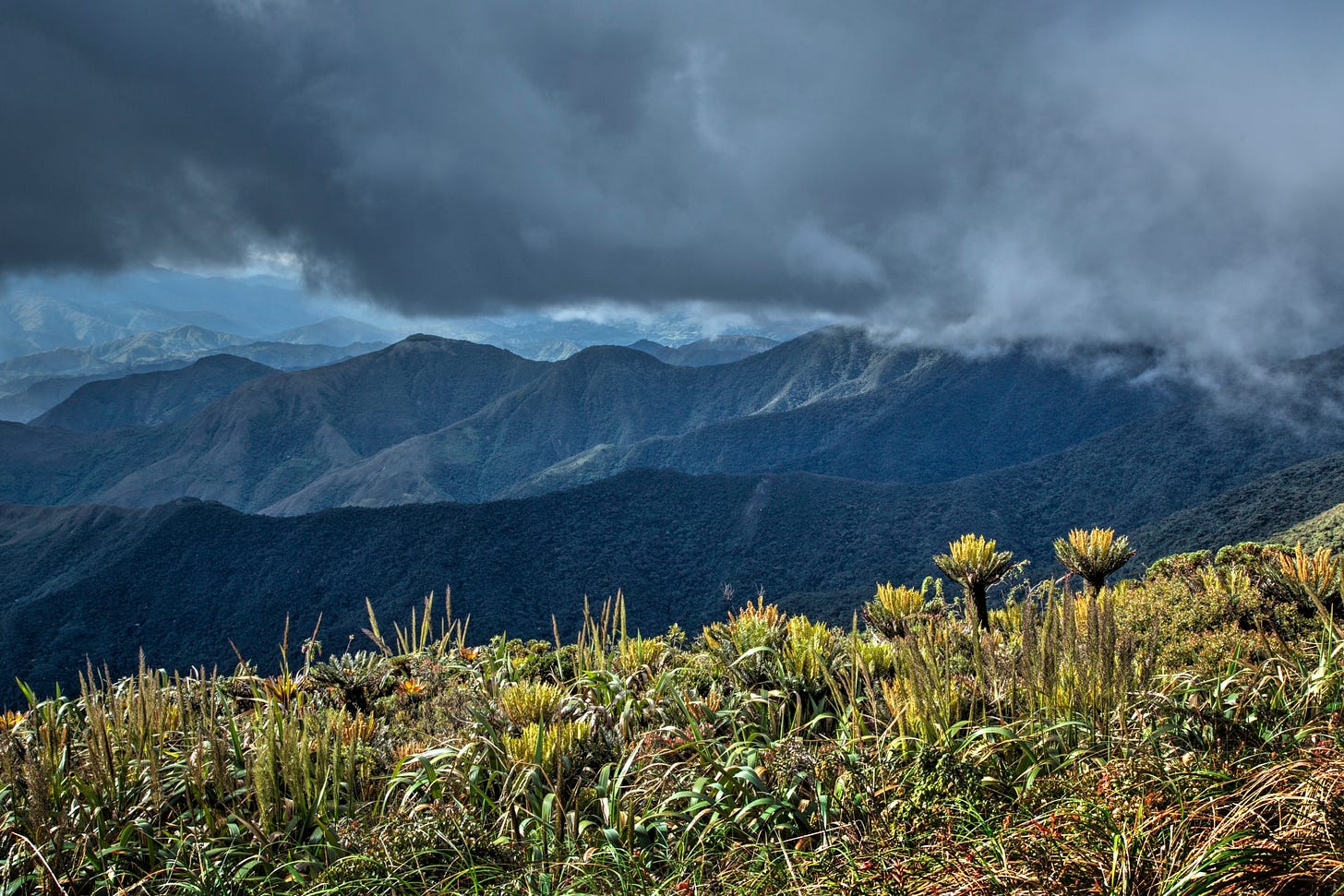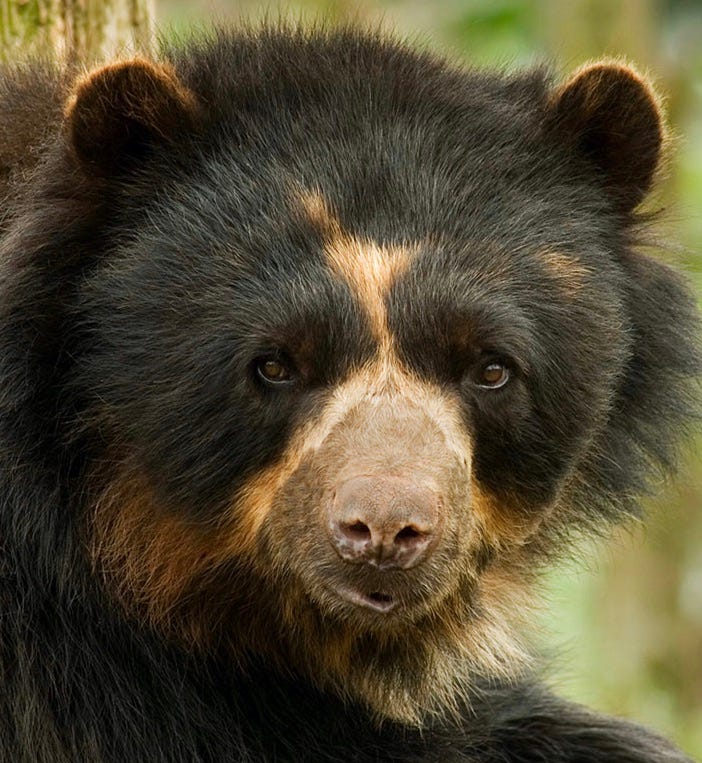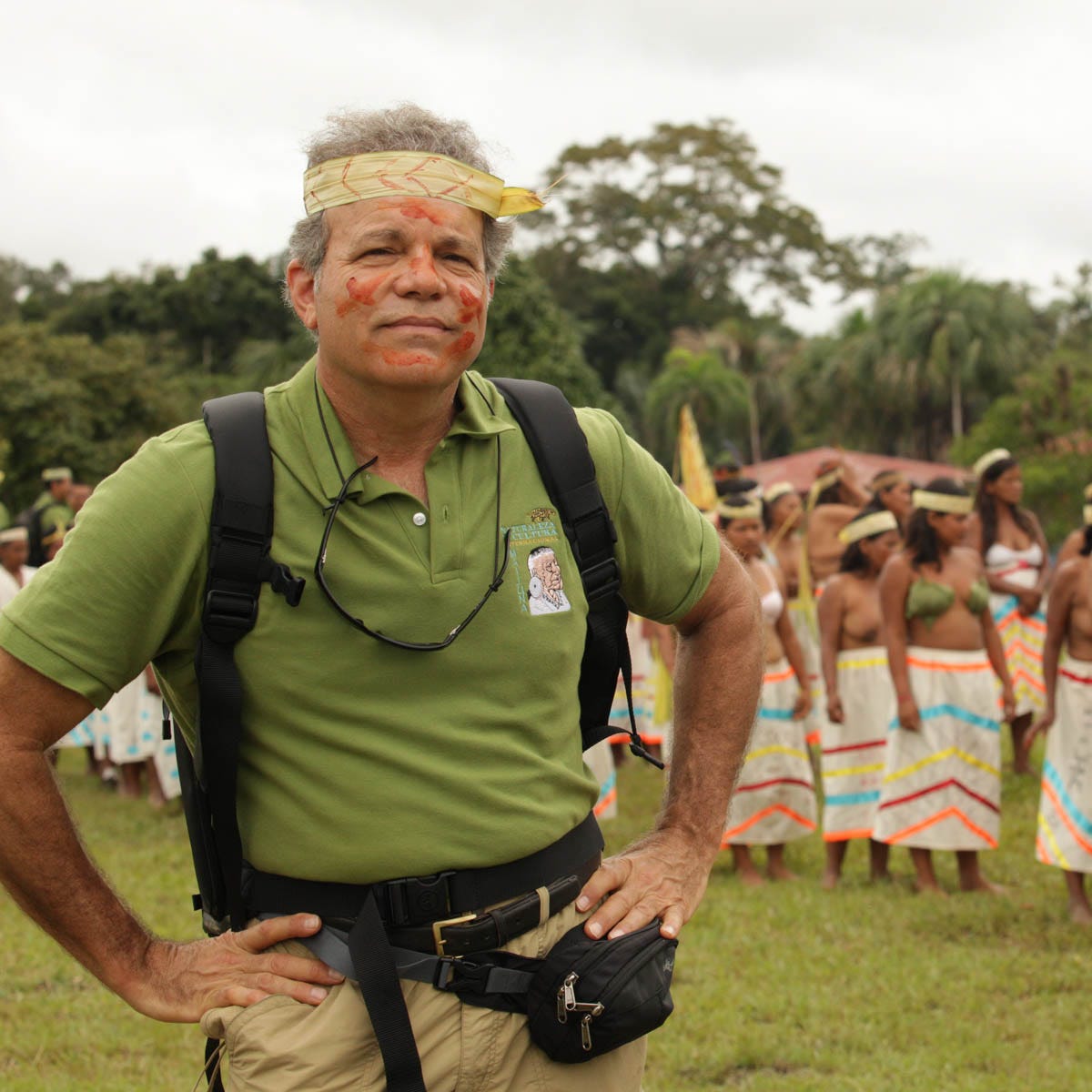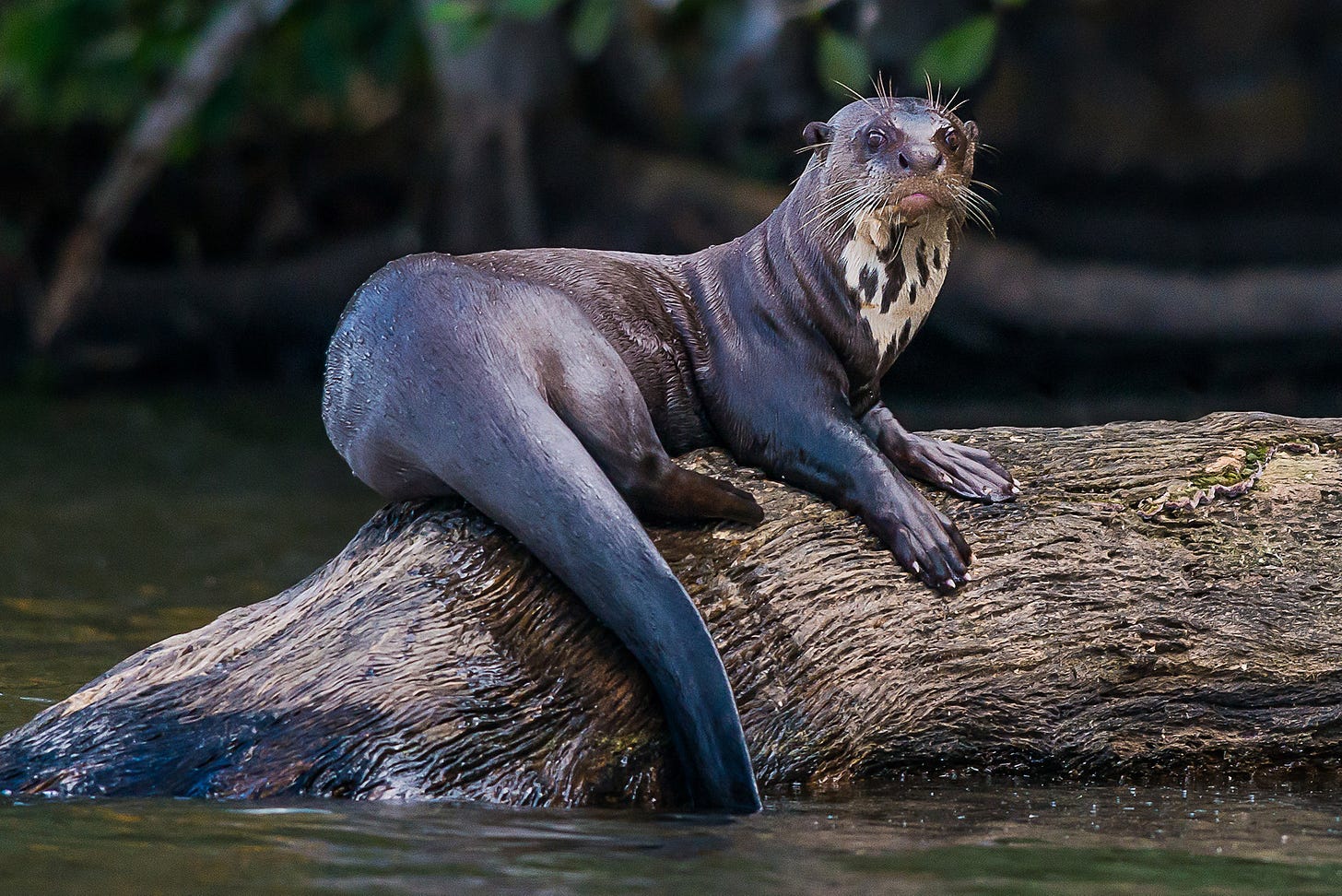YOU WALK INTO A DIMLY LIT BAR. THERE'S A LION SITTING AT ONE END AND A JAGUAR AT THE OTHER. WHO DO YOU BUY A DRINK FOR?
Hope for the Amazon: Part 2, The Science Business Model of Nature and Culture International
You walk into a dimly lit bar. There’s a lion sitting at one end and a leopard at the other. Who do you buy a drink for? Answer: the lion. Jaguars have the strongest jaws of all the cats. The most crushing power. Lions and tigers go for the neck. Jaguars crush the skull.
Not sure why I wanted to lead with that, though it’s an odd fact I’d never heard, and jaguars are “near-threatened” even in the Amazon, and also I’m sitting at a vegan lunch in California a long way from the Amazon, chatting with Charles Smith, who told me the story.
Charles is Chairman of the Board of Nature and Culture International, a highly successful organization that has been applying a novel entrepreneurial and scientific approach to saving the region, with a smart emphasis on indigenous peoples and carbon sequestration, too.Nature and Culture International has conserved over 27 million acres in South America, principally Ecuador, Peru, Bolivia, Columbia and Mexico. That’s more than three-quarters the size of New York state; not all of it in the Amazon, but also rare dry forests west of the Andes, crucial watersheds endangered by cattle ranches, and cloud forests containing the most complex botany on the planet. These are diverse ecosystems linked by geography. The river bottoms of the Amazon rise to cloud forests and eastward up the slope of the Andes until around 12,000 feet trees give way to grasslands and then the winds and clouds cross over, in the case of Ecuador, losing their rain, down the centuries old farm and pasture lands to magnificent dry-land forests which receive at most 10-12 inches of rain a year. Here gargantuan ceiba trees with photosynthetic bark rise to the skies and guayacan trees drop their leaves as our deciduous forests do, then burst into an expanse of shock-top xanthic yellow as far as the eye can see when the rains return eight months later. This rare ecosystem found in the Ecuadorian Andes is called the Páramo, and it allows an interchange of species from east to west that biologists regard as an evolutionary hot-spot of change, and NCI views as a unique range to protect and save.
(The paramo ecosystem at 10,000 feet in southern Ecuador)
“I believe Nature and Culture will be remembered in history as one of the few organizations who did the right thing, at the right scale, in the right place, and in time”—Harvard Biologist E.O. Wilson
“If we have a business plan it's a business plan that contemplates deep into the future,” says Smith. “You could say 10,000 years or a million years, perhaps, in the future. That's because if humanity doesn't get a handle on the climate change issue, the Amazon is at some risk of transforming into something like chaparral, which is a fire-adapted ecosystem. The Amazon is fragile. If it suffers three years in a row of drought, things can catch on fire. So there's real risk. You may lose huge swaths of the Amazon. But if that were to happen, then the Andes are right next door and species can move upslope. There's an altitudinal gradient and species will have an escape valve.”
NCI’s short-term business plan is more optimistic. They’ve set up over 100 reserves, many if not most encapsulating some 30 indigenous communities who have, after all, shepherded and protected their land against all comers from the Aztecs to the Spanish to Chevron.
“On the ground we have over 100 conservationists from these countries with full-time salaries who understand what’s going on because they grew up there. They have connections with the community and emotionality and believability and also the ability to work in the political world of their home countries. I mean, there's very valuable extraction industries going on down there. That kind of pressure for oil and gold has been going on since the conquistadores. How ferocious those people must have been in the face of conquistador steel and the diseases the conquistadors brought. But they're doing better now and one of our goals is to figure out how they can prosper with their forests standing.
“Carbon is one of the ways to do that. So when we do create a reserve—and just last week we put in place a 3 million acre reserve in the Ecuadorian Amazon—the task is how to take carbon money and get it to the people who are, indeed, doing the conservation, to the indigenous tribes that have lived there like the Shuar, the Ashuar, the Kitchwa, and more. The trick is how do you get those folks who have done such a great job preserving their forests some reward for doing that, and carbon money is definitely one of the ways to do it. NCI's job there is to act as entrepreneurs and organize all the right parties, all the stakeholders from indigenous to provincial government, to the national government; then provide lawyers and robust GPS capabilities to seal the deal, so to speak, so that countries like Norway, Germany and Great Britain can reward folks who are conserving their forest.”
The Amazon Fund has received $1.4 billion so far and last week the United States pledged an initial, rather small $50 million, with, frankly, tricky prospects of passing Republican nay-sayers and neo-climate-deniers.
(Fabian Rodas, NCI Cuenca Office Coordinator, Andean Corridor, inspects a ceiba tree.)
But this new model, Smith explains, is not some complicated carbon trade, the Disney corporation, for instance, buying and trading carbon credits to offset the carbon they generate from theme parks—quite nice, Charles, inserts—but rather the new model simply involves counting the trees, that is quantifying the carbon saved in forest reserves, and rewarding those who protect it. This reward could be in terms of money, or health systems, or education.
“Remember trees are about 50% carbon and if you cut down trees they will release that carbon into the atmosphere as they decompose and it's thought that deforestation accounts for about as much carbon going into the atmosphere as the entire transportation sector in North America. That is, all the cars, the planes and trains and trucks in North America equal what deforestation in the world is giving in terms of carbon into the atmosphere.”
Nature and Culture is politically neutral, yet plugged in. “Sometimes you have kind of a left-leaning government in place and then it turns into a right-leaning government. Despite those changes, we've never lost a single reserve and we have hundreds of reserves now in South America”
The NCI board includes California entrepreneurs who have founded various biotech, satellite, and internet companies, which brings an unusual creative-results-business approach to conservation.
(Nature and Culture International Chairman Charles Smith at a Maijuna ceremony in northern Peru on the Amazon River)
“We don't do that thing where we just send money to someone for a two- or three-year project. Our conservationists are on payroll and that allows them to be entrepreneurial. These guys don't get into a project if it's not gonna work. They don't keep going simply because there's money there. For us, it's not about just money coming in the door for conservation. It's about putting that money to work as effectively as you can and getting results.”
Results are important to Smith and the rather collegial board. He is known for inventing the royalty-free image delivery model at Digital Stock Inc., one of the world’s first internet-enabled transaction models, later sold directly to Bill Gates. Charles also developed the confidence-based learning model at Amplifire, a learning platform based on cognitive psychology with over 3 billion learner interactions to date, and recently sold to Polaris Partners. Amplifire is a company based on the commercial knowledge of who truly knows things and who thinks they do but in fact does not. (A neat trick worth a separate column, no?)
NOTE: I’ve blown up the pictures here so you can see the the size of the ceiba tree, the eyes of the spectacled bear, the jaguar’s stare. But don’t buy the jaguar a drink. She might bite your head off.
THE USUAL LIQUIDITY: Charles and I once wrote a screenplay together called “The 29th Day” about a disillusioned biologist who decides to take down humanity to save nature. His weapon? H1N1, the bird flu. Sound familiar? Now we should call it “Cough!” Any takers? It’s in turnaround.












This just in, 2/28/23:
Eduardo Mendúa, an Indigenous activist who was fighting to protect Ecuador’s Amazon rainforest from oil extraction, has been killed by gunmen, the Indigenous organization CONAIE reports.
https://insideclimatenews.org/news/28022023/eduardo-mendua-ecuador-shot-death/